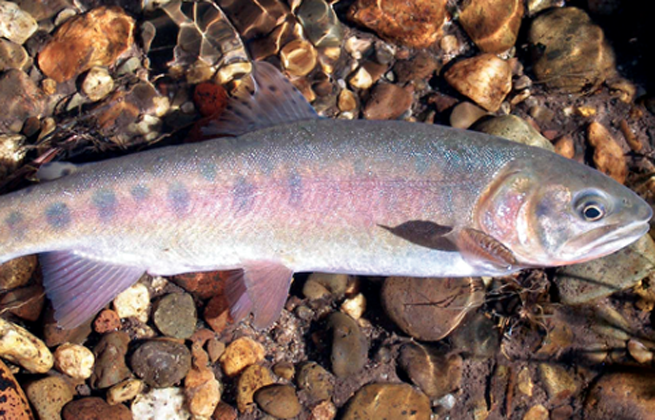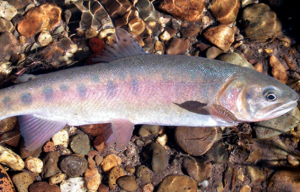By Ted Williams
[dropcap]T[/dropcap]he Paiute cutthroat has a future thanks to dedicated, tireless fisheries biologists.ELDER RELATIVES, NOW DEPARTED, used to admonish me for reporting bad news about fish and wildlife. But whenever I asked them to fetch me good news they came up empty—there wasn’t and isn’t a lot. If they are looking down (or up) today, they’ll approve of the following story. It’s about heroic fisheries professionals of the California Department of Fish and Wildlife, the US Forest Service and the US Fish and Wildlife Service, who prevailed in their 10-year struggle against stupidity and duplicity to save America’s rarest trout.
Moreover, this is the first time that humans will have restored a threatened or endangered fish to 100 percent of its traditional habitat—nine miles of Silver King Creek, which drains the Carson-Iceberg Wilderness of the Toiyabe-Humboldt National Forest, high in California’s Sierra Nevada Mountains. In fact, the Paiute cutthroat will have more habitat than nature originally provided, because pure Paiutes now exist above impassable falls in originally fishless upper Silver King Creek and because, for safety, managers have established four self-sustaining refuge populations in distant watersheds.
But it isn’t just the Paiute cutthroat that the interagency recovery team created a future for. It built case law, national precedent and public awareness that should assist recovery and protection of dozens of other imperiled fish, such as golden trout, Little Kern golden trout, Kern River rainbow, Apache trout, Gila trout, redband trout, westslope cutthroat, Lahontan cutthroat, Yellowstone cutthroat, Rio Grande cutthroat, Colorado River cutthroat, greenback cutthroat, bull trout, blueback trout and brook trout, and depleted races of steelhead, coho salmon and king salmon, to mention just a few.
The Paiute cutthroat, recently diverged from Lahontans, is unique among trout in that it lacks spots. J.O. Snyder, of Stanford University, discovered the fish in 1933. He was so impressed with its unique beauty that he named it Salmo seleniris (now Oncorhynchus clarki seleniris) because of the “resemblance of its evanescent tints to the lunar rainbow.”



